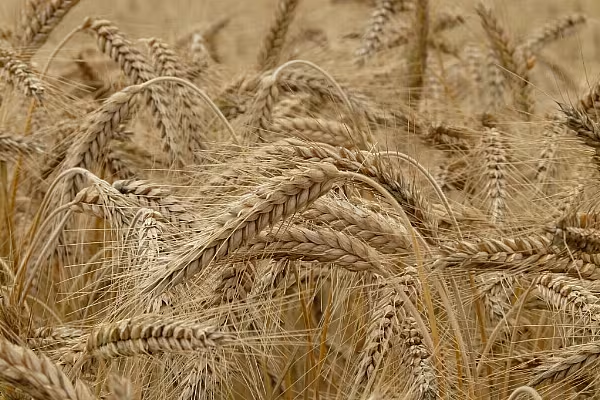Food aficionados may be scrambling for ingredients that are gluten free, but in the wheat market, traders can’t get enough of the stuff.
Gluten is the element that gives dough its strength and stretch -- making it a key component in bagels, pizza crust and specialty breads. It’s found in greater abundance in protein-rich wheat. While global grain stockpiles have never been higher, recent harvests have favored quantity above quality. Now, a dearth of high-protein crops is sparking record premiums.
“Not all wheat is created the same,” said Bill Lapp, the president of Advanced Economic Solutions in Omaha, Nebraska. “It looks like protein’s going to be very dear again this year.”
American farmers produce two main types of wheat: winter and spring. Protein levels are higher for the latter, and the hunt for more gluten has sent prices to the highest since mid-January. Its premium to both major winter varieties traded in Chicago has more than doubled in the past 12 months. Hedge funds are positioning for the spread to get even wider.
July spring wheat futures have climbed 9.5 percent this year to $5.89 a bushel on the Minneapolis Grain Exchange. The commodity is fetching its highest premium ever to both varieties of winter wheat traded in Chicago, based on the current contracts for July delivery.
Hard red winter wheat is typically used for bread-making, while soft red winter goes into cakes and cookies. If a crop’s quality is too low, it may be fed to livestock.
While it’s a thin market, funds have been boosting their spring wheat net-long position, or the difference between bets on a price increase and wagers on a decline. In the week ended May 30, the holdings rose 67 percent to a 12-week high of 4,976 futures and options, U.S. Commodity Futures Trading Commission data released three days later show. At the same time, money managers have bet on price declines for benchmark soft red winter wheat for almost two straight years.
Less Protein
Total world wheat production surged to a record last year amid bigger yields. But getting more kernels and starch per plant used up nutrients and left less-than-normal amounts of protein. While stockpiles have surged, that’s come amid an “abundance of low-protein wheat in the world,” Societe Generale SA said in a May 31 report.
The trend looks poised to continue this year, after a cool, damp spring for many American crops.
Last year’s U.S. harvest of hard red winter wheat, the most common variety grown, had an average protein level of 11.5 percent, below the five-year average of 12.8 percent. Early samples from this season’s crop show an average of 10.8 percent, a June 2 report from U.S. Wheat Associates showed. The bulk of harvest occurs in June and July, when farmers will get a better sense of the crop.
Meanwhile, recently planted spring wheat is facing rough conditions. In Canada, some areas in the southern prairies are in need of rain, while other regions are struggling with excess moisture. Some later-seeded crops in Saskatchewan are “sitting in dry ground” and may not germinate or emerge evenly without precipitation soon, said Shannon Friesen, acting crop management specialist for the province’s agriculture ministry.
More Dryness
In the U.S. growing region, North Dakota and neighboring states are seeing widening areas of dryness. The government rated 62 percent of this year’s crop in good or excellent condition as of May 28, down from 79 percent a year earlier.
Wheat “is OK today, but every day without rain, the yield is reduced,” said Bill Ongstad, 66, a farmer in Harvey, North Dakota, who planted 2,100 acres of the spring variety. His fields saw a half inch (1.3 centimeters) of precipitation in May, compared with 2.5 inches normally.
Still, the spread between winter and spring wheat may not widen further if prices for the winter varieties start to rally. While world stockpiles are forecast to climb to an all-time high in the 2017-2018 season, almost half of the inventory is held by China -- which exports very little.
At the same time, adverse weather has raised production concerns for crops in parts of Ukraine and Australia. That could help tighten up supplies for global trade. Crop stress is expected to continue through mid-June in southern Canada and the northern U.S.
U.S. spring wheat crop ratings declined in the week ended June 4, with 55 percent of the crop rated good to excellent, USDA data showed Monday. That’s the worst since 2002 for the time of year.
“The level of anxiety is starting to rise, especially in the spring wheat market,” said Frayne Olson, an agricultural economist at North Dakota State University. “We’ve got supplies in inventory, but it’s tighter than people realize.”
News by Bloomberg, edited by ESM. Click subscribe to sign up to ESM: The European Supermarket Magazine.














